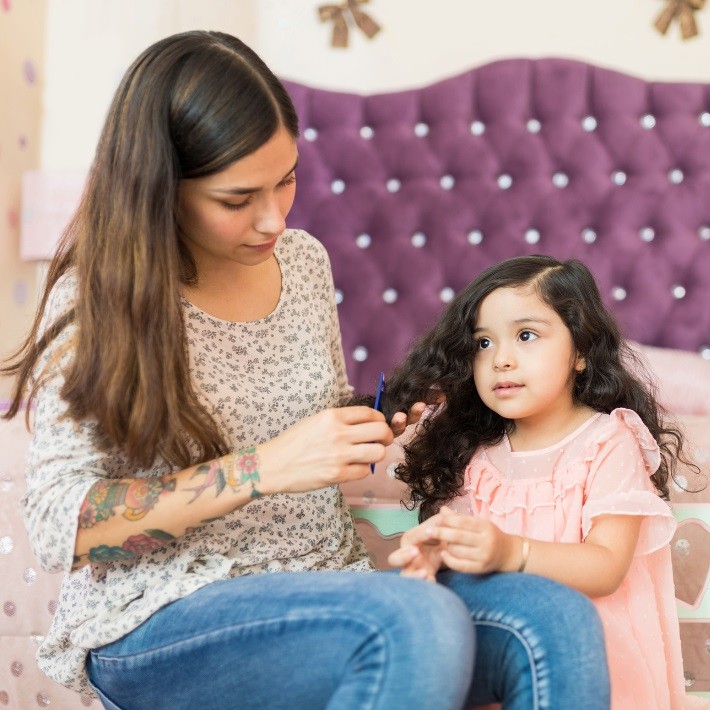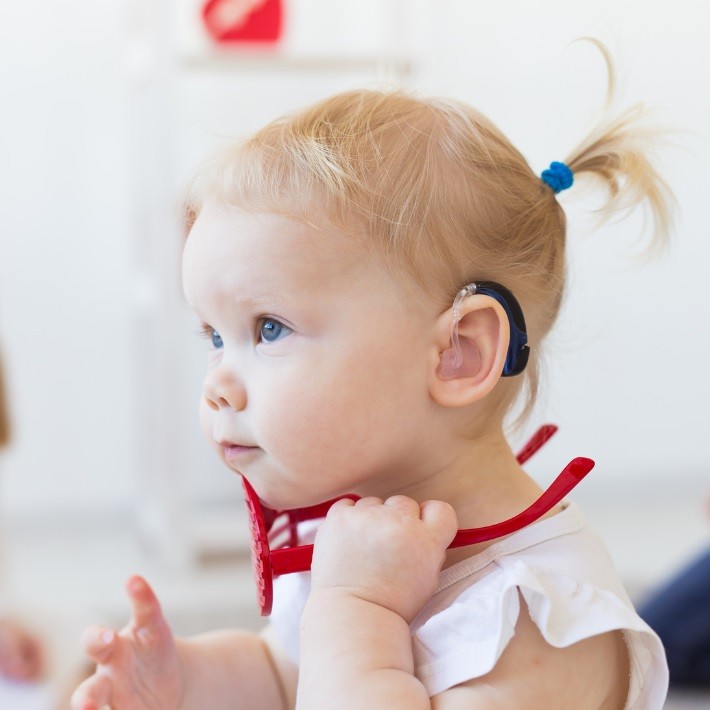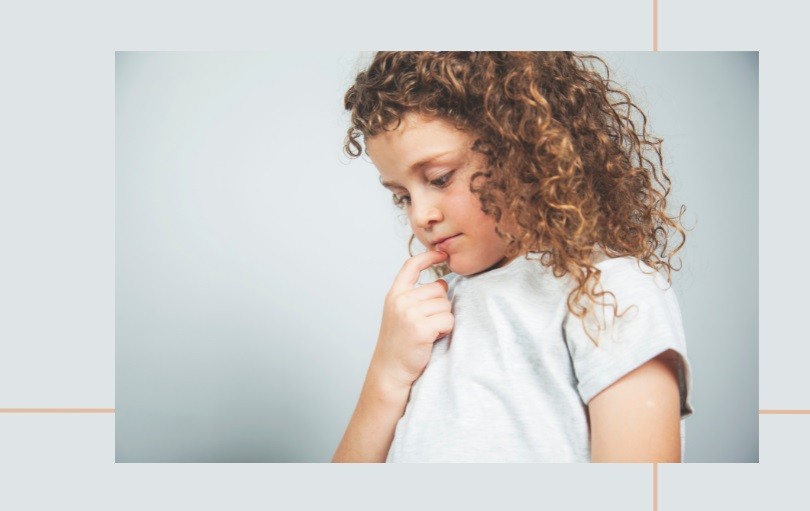Last Updated on March 28, 2025
The color of your baby’s hair is determined by their genetics. Hair color inheritance is complex, and it is impossible to predict the exact color accurately.
Hair color is a unique trait that is determined by multiple genes. These genes are inherited from both parents and can produce a wide variety of shades, from black to blonde and everything in between. It is crucial to remember that predicting a baby’s hair color is merely a guessing game.
One can use the hair color of the baby’s parents, grandparents, and other relatives as a guide to determine their child’s possible hair color. It is also essential to keep in mind that a baby’s hair color can change as they age. For example, a child with blonde hair may develop darker hair as they grow older. Ultimately, the best advice is to embrace your baby’s unique traits, including their hair color, and enjoy the journey of watching them grow and develop into their unique selves.
Understanding Genetics And Hair Color Inheritance
The Basics Of Genetics And Hair Color Inheritance
Have you ever wondered what hair color your baby will have? Understanding genetics and hair color inheritance can help you predict the probability of your offspring’s hair color. Genetics can determine which hair color genes are passed down to a child and how they are expressed in the child’s hair.
Here are a few key points to help you understand hair color inheritance.
- Hair color is determined by two types of pigment: Eumelanin (brown/black) and pheomelanin (red/yellow).
- The amount and type of pigment produced are determined by genes passed down from parents.
- Hair color inheritance is a complex process involving multiple genes, not just one.
Related: What Does Baking Soda Do For Gray Hair?
How Genes Determine Hair Color
Genes play a crucial role in determining hair color. There are two main types of genes involved: those for hair pigmentation and those that regulate how much pigment is produced. Here are a few key points about how genes determine hair color.
- The mc1r gene plays the most significant role in hair color. It determines whether hair will be red or not.
- The amount of eumelanin and pheomelanin produced is determined by other genes, including tyr, oca2, slc24a5, and herc2.
- Different combinations of these genes can create a wide range of hair colors.
The Role Of Dominant And Recessive Genes In Determining Hair Color
Dominant and recessive genes can play important roles in determining hair color. Dominant genes mask the effects of recessive genes. Here are a few key points about the role of dominant and recessive genes in hair color inheritance.
- Brown and black hair are dominant over red and blonde hair.
- If a parent has a dominant brown or black hair gene and a recessive red or blonde hair gene, they will likely have brown or black hair.
- If both parents have recessive red or blonde hair genes, their child is likely to have red or blonde hair.
The Interplay Of Multiple Genes In Determining Hair Color
Hair color is determined by multiple genes, not just one or two. It’s possible to inherit different genes from each parent, which can create a wide range of possible hair colors. Here are a few key points about the interplay of multiple genes in hair color inheritance.
- The number of genes involved in hair color inheritance is not fully understood.
- The more genes that are involved in hair color inheritance, the more complex the inheritance pattern becomes.
- Different combinations of genes between parents can result in unique hair colors in their offspring.
Environmental Factors That Can Impact Hair Color
Environmental factors can impact hair color but to a lesser extent than genetics. Here are a few key points about how environmental factors can affect hair color.
- Exposure to sunlight can cause hair to lighten or darken.
- Nutritional deficiencies can sometimes lead to changes in hair color (such as copper deficiency leading to lighter hair).
- Hair dyes can temporarily change hair color but do not affect genetics.
Predicting The Hair Color Of Your Baby

Related: Does Baking Soda And Vinegar Dissolve Hair?
Understanding The Hair Color Of Parents
Hair color is a hereditary trait that is passed down from the parents to the child, but the outcome is not always easy to predict. This is because the determination of hair color is a complex process that involves multiple genes.
Understanding the hair color of the parents can help predict the possible hair color of the baby.
The Likelihood Of The Baby Inheriting Hair Color From Each Parent
The likelihood of the baby inheriting hair color is determined by the dominance of the genes of the parents. In general, the darker hair color genes are dominant over the lighter hair color genes. The probability of the baby inheriting a particular hair color is never 100% certain, as multiple genes determine hair color.
Exceptions To The Rules Of Hair Color Inheritance
Sometimes, the baby might inherit a hair color that is not typical of the parents. This is because genes for hair color are not the only factors that contribute to hair color determination. Other factors, such as hormonal changes, can affect the hair color of the baby.
Additionally, mutations in genes can occasionally lead to unexpected hair colors.
Predicting The Hair Color Of Mixed-Race Babies
Predicting the hair color of mixed-race babies can be more difficult, as the genetics involved are more complex. It’s essential to consider the hair color of the grandparents, as well as the parents when attempting to predict the hair color of mixed-race babies.
In general, the dominant genes of the parents will have the most significant impact on the baby’s hair color.
Tools And Resources For Predicting Hair Color
There are several online tools available that can help predict the hair color of the baby, based on the hair color of the parents. These tools are not always accurate and should be taken with a grain of salt.
Consulting a genetic counselor or medical professional is the best way to get accurate predictions about the hair color of the baby.
Predicting the hair color of the baby is not an exact science and involves a combination of genetics and other factors. While it can be exciting to speculate about the potential hair color of your baby, it’s important to remember that the baby’s hair color is only one small part of its unique identity.
Caring For Your Baby’S Hair Based On Color

Related: Why Does My Hair Dry So Fast?
Understanding Ethnic Hair Types
Different ethnic groups have unique hair types, which require various hair care routines.
- African hair is kinky, coarser, and fuller compared to other ethnic groups. It requires frequent oiling, deep conditioning, and gentle combing to maintain its moisture.
- Asian hair is straight, sleek, and shiny. It may require adequate protein, moisture, and oil to remain healthy and strong.
- Caucasian hair varies from straight to curly and from thin to thick. It needs to be washed and conditioned regularly to maintain its health.
Maintaining Natural Hair Colors
If your baby has natural hair color, you should ensure that they maintain it naturally.
- Protect your baby’s hair from the sun by covering it with a hat or headscarf.
- Use sulfate-free shampoos to prevent color fading.
- Avoid heat styling and harsh chemicals that may bleach or damage the hair.
- Regularly trim split ends to promote healthy hair growth.
Caring For Dyed Hair
If you decide to dye your baby’s hair, it is essential to take extra care of it.
- Choose a hair dye that is gentle and free from ammonia, peroxide, and other harmful chemicals.
- Wait for at least six months before dyeing your baby’s hair. This will allow their natural hair color to develop fully.
- Use a hair conditioner regularly to keep the hair moisturized and healthy.
- Wash your baby’s hair with a mild shampoo to avoid color fading.
Hair Care Tips Based On Hair Color And Texture
Different hair colors and textures require unique hair care tips.
- For curly hair, use a wide-toothed comb or your fingers to detangle it.
- For frizzy hair, avoid brushing it when it is dry since it may damage the hair. Instead, use a hair serum or moisturizer to tame the frizz.
- For fine hair, avoid heavy products that may weigh down the hair. Use a natural bristle brush to prevent breakage.
- For thick hair, use moisture-rich hair products and avoid using a lot of heat when styling.
Tools And Products For Caring For Different Hair Types
Different hair types may require unique hair care tools.
- Hairbrushes: For different hair types, there are different hair brushes, such as a natural bristle brush for fine hair or a wide-toothed comb for curly hair.
- Shampoo and conditioners: Choose products that are sulfate-free and suitable for your baby’s hair type.
- Hair serums: These are excellent for adding shine and taming frizz.
- Hair bands and accessories: Use accessories that will not damage your baby’s hair, such as hairbands without metal clasps or soft headbands.
Keeping your baby’s hair healthy and looking good requires dedication and proper care. By following these tips, you can keep your baby’s hair healthy, strong, and beautiful.
Frequently Asked Questions For What Color Hair Will My Baby Have?
What Genetic Factors Determine A Baby’s Hair Color?
The genes inherited from parents determine the hair color of a baby.
How Do Dominant And Recessive Genes Affect Hair Color?
Dominant genes for hair color override recessive genes; a recessive gene only affects hair color when paired with another recessive gene.
Is It Possible For A Baby To Have A Different Hair Color Than Both Parents?
Yes, it’s possible when a recessive gene passed down from grandparents expresses itself.
Can The Hair Color Of A Baby Change After Birth?
Yes, but it usually gets darker over time, and changes to a different color are rare.
What Hair Colors Are Most Common In Babies?
Babies are often born with dark hair, but their hair can lighten or darken. Blonde hair is less common than brown or black hair.
Conclusion
Predicting the hair color of your newborn can be an exciting but uncertain endeavor as it involves complex genetics and unpredictable outcomes. By understanding the basic principles of genetic inheritance and recognizing the role of dominant and recessive genes, you can make educated guesses about the potential hair color of your child.
Remember, hair color is not the only factor that contributes to the uniqueness of your baby, and it’s important to embrace their individuality and celebrate their differences. While hair color may change over time due to various factors such as hormonal changes, exposure to sunlight or aging, the happiness and joy that your child brings to your life will remain constant.
So, cherish every moment and enjoy the beauty of your little one, regardless of what hair color they end up having.

